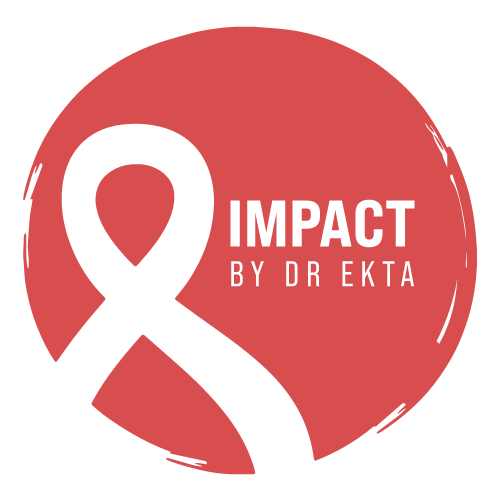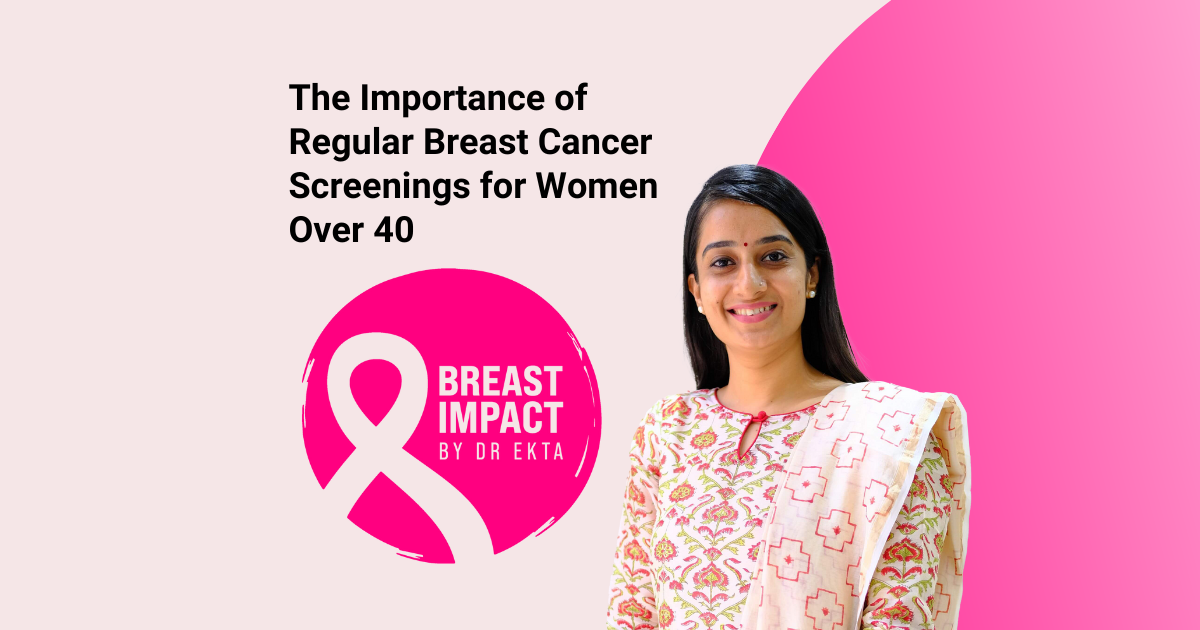As an oncologist, one of the most critical messages I share with my patients is: Breast cancer is best treated when detected early. For women over the age of 40, regular breast cancer screenings can truly be life-saving. Breast cancer remains one of the most common cancers affecting women worldwide, and while it’s understandable that screenings may feel daunting, their importance cannot be overstated.
In this blog, I will walk you through why breast cancer screenings are essential for women over 40, the various methods available, and how you can take proactive steps to protect your health.
Why Breast Cancer Screenings Matter for Women Over 40
Breast cancer risk increases with age. By the time a woman reaches 40, her risk of developing breast cancer significantly rises. In fact, the majority of breast cancer diagnoses occur in women over 40, with the incidence increasing further as women age. At this stage in life, regular breast cancer screenings become a key component of preventative healthcare.
Early-stage breast cancer can often present with no symptoms, meaning you may feel completely healthy. This is why screenings are crucial—they can detect small abnormalities or growths before they develop into advanced cancers. Catching the disease early often leads to less aggressive treatment options and, most importantly, higher survival rates.
How Often Should You Get Screened?
For most women, I recommend starting regular mammograms at age 40 and continuing annually or biannually, depending on individual risk factors. Some may need to start earlier, particularly if there is a strong family history of breast cancer or genetic factors, such as BRCA1 or BRCA2 mutations.
In addition to mammograms, I encourage patients to perform monthly self-breast exams and report any changes to their healthcare provider, no matter how minor they may seem. Trust your instincts—if something feels different, it’s always better to get it checked out.
Types of Breast Cancer Screenings
Let’s break down the common types of breast cancer screenings and how each works:
1. Mammograms
Mammograms are the gold standard for breast cancer screening and remain the most effective tool for detecting early-stage breast cancer. This low-dose X-ray allows us to look for tumors or abnormal changes in breast tissue, often catching cancer before it becomes palpable.
For women over 40, regular mammograms are a must. These screenings can identify lumps or masses too small to be felt during a physical exam. It’s quick, non-invasive, and widely available at most healthcare centers.
2. Breast Ultrasound
A breast ultrasound is often used as a supplementary screening, particularly if a mammogram shows dense breast tissue or an abnormality. Ultrasounds use sound waves to produce images of the breast, providing additional detail that can help in further evaluation. It’s a painless and safe option that many women may undergo during the diagnostic process.
3. MRI (Magnetic Resonance Imaging)
Breast MRI is typically reserved for women at high risk of breast cancer or for those who need more detailed imaging. It uses magnetic fields and radio waves to create detailed pictures of the breast tissue. While not part of routine screening for all women, it’s a valuable tool in detecting early cancers, particularly in dense breast tissue.
Addressing Common Concerns About Screenings
I often hear concerns from patients about the screening process, and I want to address those worries directly:
- Discomfort: It’s true that mammograms can cause slight discomfort due to the compression of the breast during the procedure. However, this compression is necessary to get clear images, and the process is quick. Any discomfort is far outweighed by the potential benefit of early detection.
- Radiation Exposure: Mammograms do use a small amount of radiation, but it’s minimal and falls well within safe limits. The benefits of catching cancer early far exceed the negligible risks associated with this low-dose radiation.
- Cost: While cost can be a concern, many health insurance plans cover routine mammograms for women over 40. Additionally, there are organizations and healthcare providers that offer low-cost or free screenings to ensure that financial barriers don’t prevent women from accessing these life-saving tests.
The Role of Self-Exams and Awareness
While mammograms are an essential tool, they aren’t the only method of detection. I always advise my patients to stay aware of their own bodies. Regular breast self-exams can help you become familiar with the normal look and feel of your breasts, making it easier to notice any unusual changes, such as lumps, changes in breast size or shape, or discharge from the nipple.
If you notice anything unusual, don’t wait. Reach out to your healthcare provider for further evaluation, as early intervention can make all the difference.
Common Misconceptions About Mammograms
There are a few misconceptions that I’ve come across regarding breast cancer screenings:
- “If I don’t feel a lump, I don’t need a mammogram.” This is false. Many early-stage cancers can’t be felt through physical examination but can be detected by a mammogram.
- “If I’m healthy, I don’t need regular screenings.” Again, false. Even if you feel healthy, regular screenings are essential for early detection. Cancer doesn’t always present symptoms in the early stages.
- “I don’t have a family history of breast cancer, so I’m not at risk.” While family history does increase your risk, many women who are diagnosed with breast cancer have no family history at all. That’s why routine screenings are vital for everyone over 40.
Taking Action: Schedule Your Breast Cancer Screening
As an oncologist, my advice is simple: Don’t wait to schedule your breast cancer screening. The earlier we detect breast cancer, the better the chances of successful treatment and recovery. Routine mammograms, combined with an awareness of your body and regular self-exams, can significantly reduce your risk of facing late-stage breast cancer.
Women over 40 should consider regular screenings a priority in their healthcare routine. It’s a small step that can make a world of difference for your future health.
In Conclusion
Breast cancer screenings are more than just a preventative measure—they are a form of empowerment. By prioritizing your health and taking action through regular screenings, you are actively reducing your risk and giving yourself the best possible chance for early detection and successful treatment.
So, if you’re a woman over 40, or approaching that milestone, now is the time to talk to your healthcare provider about setting up your regular breast cancer screening schedule. Your future self will thank you.
Key Takeaways:
- Regular breast cancer screenings are essential for women over 40 due to increased risk.
- Mammograms are the most effective tool for early detection, but ultrasounds and MRIs may be used in specific cases.
- Self-exams and awareness of breast changes are also critical for early detection.
- Common misconceptions should not deter you from scheduling regular screenings.
Tags: Breast cancer, Breast cancer screenings, Women over 40, Cancer prevention, Mammograms, Early detection, Self examination.

